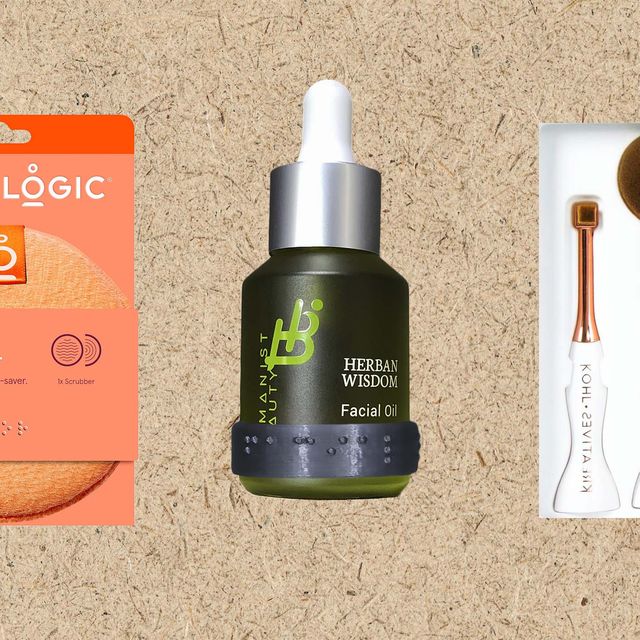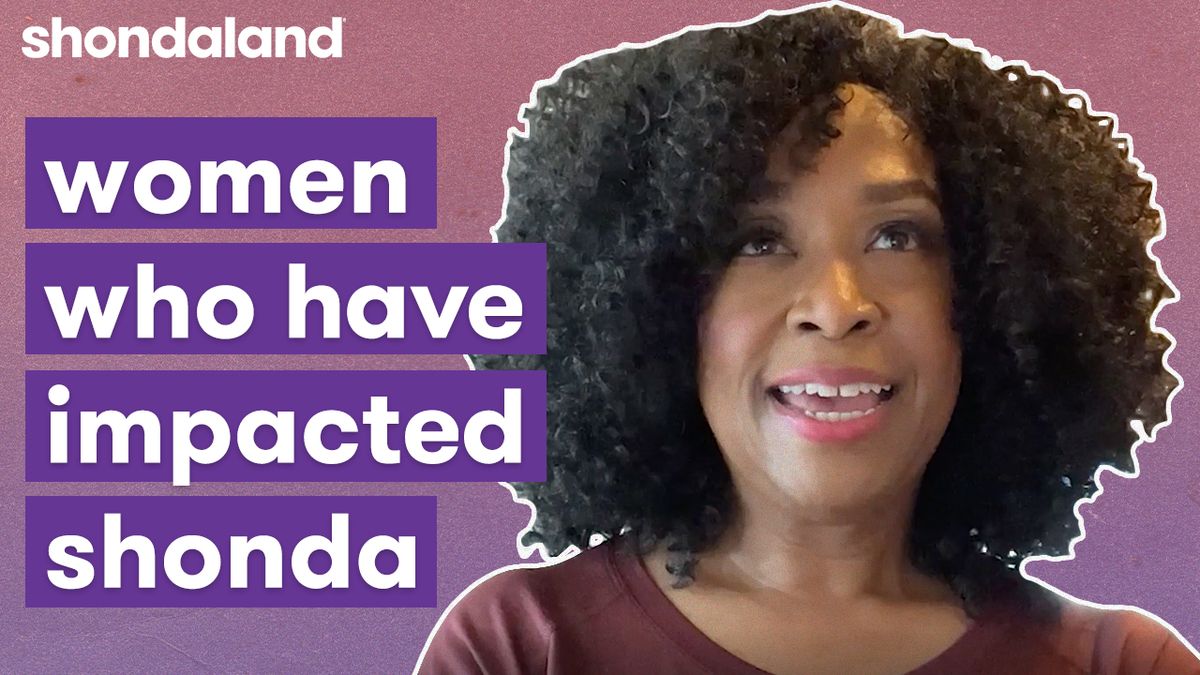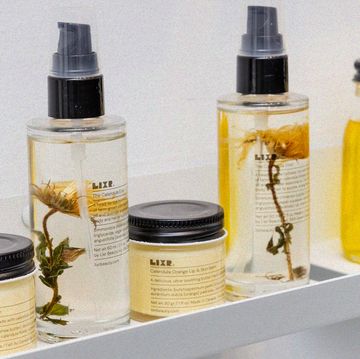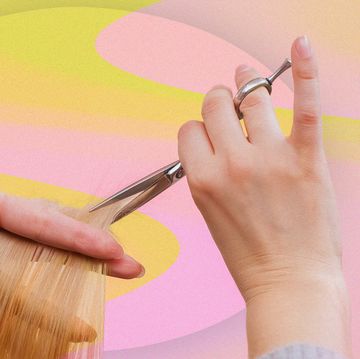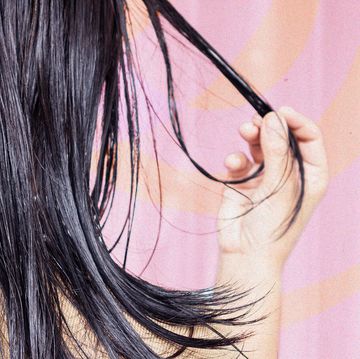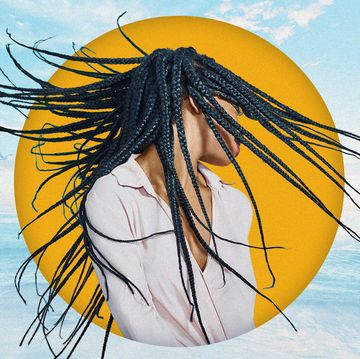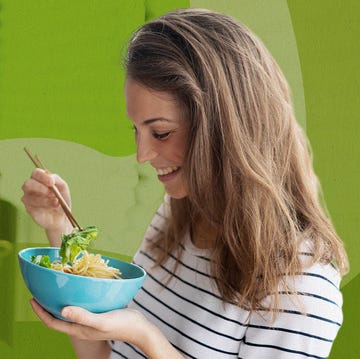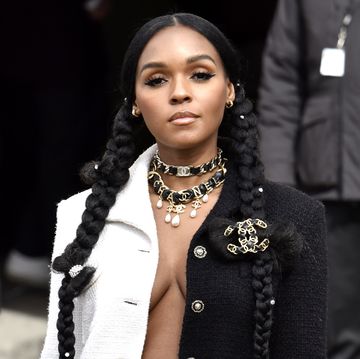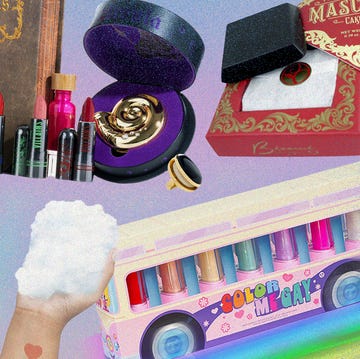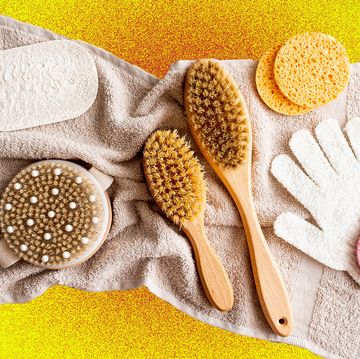Natalie Trevonne, a blind actress, dancer, and podcaster, begins her morning by running through a multistep skincare routine, creating the perfect canvas for her makeup application. After applying Lancôme’s Teint Idole Long Wear foundation and an eyeliner, she’s ready for bronzer. But she reaches an obstacle that those who are visually impaired are familiar with in some fashion: a favorite highlighter-bronzer duo stick, which she likes for its easy application, does not distinguish which side is which. So, Trevonne’s routine comes to an abrupt halt.
Trevonne started losing her vision at age 18 as a result of her juvenile rheumatoid arthritis and is now legally blind. While she’s able to enlist the help of Be My Eyes, a mobile app designed to help blind and visually impaired people cope with everyday situations via live chat with sighted volunteers, Trevonne’s dilemma is symptomatic of a far greater issue: a lack of accessibility to beauty products.
According to the World Health Organization, there are approximately 2.2 billion people around the globe who are blind or visually impaired, yet even as diversity and inclusivity become increasingly important to consumers and brands alike, the beauty industry’s long-standing exclusion of this particular group endures. Blind and visually impaired individuals have been forced to navigate the already bumpy terrain of cosmetics with another set of obstacles, from the barriers that stand in the way of finding and purchasing products to the difficulties of actually using them.
For years, Belle Bakst, a fashion editor and content creator who lost sight in her left eye as a toddler, avoided mascara at all costs. When she was 15 years old and her mom offered to take her to the mall to find the perfect mascara, she was thrilled. With eyelashes sparse and missing in some places as a result of her surgeries, Bakst was eager to enlist the help of a beauty expert. This trip proved to be hugely disappointing.
“I went to the makeup counter with my mom, and the woman working there had beautiful, long eyelashes, so naturally I wanted to mimic that,” Bakst recalls. “But she couldn’t understand why my eyes and lashes were so uneven, and when I explained myself, she said that maybe mascara just wasn’t for me. I realize now that she just didn’t know how to help me, but I was so young at the time that I genuinely believed her.”
For Trevonne, going to a store or a salon never even rises to the point of being told a product won’t work for her because she’s so rarely treated as a customer in the first place. “When I walk into a nail shop or beauty counter, they immediately see my cane and go straight to the person I’m with to ask, ‘What does she need?’” she explains. “They just talk to the person they view as normal so they feel more comfortable and don’t have to ask the blind person.” On the off chance that sales reps, makeup artists, or other providers directly address Trevonne, she usually gets something very different from what she wanted, be it the wrong shade and size or the wrong product altogether. “I have been saying for a long time that in-store consulting and disability training would make a big difference,” she says. “There are questions they can ask to get a better idea of what the client needs, and those questions don’t just have to be used for people with disabilities; they can help every person’s needs get met.”
In a time when a growing number of consumers are shopping for beauty products online, buying a moisturizer or eye shadow in just a few clicks is not always an option for blind and visually impaired individuals. “Website accessibility is a big issue still,” says Trevonne. “Right now, blind and low-vision people are unable to shop independently because the buttons and links aren’t labeled on websites and social media.” Without these labels and descriptions, it’s impossible for these customers to find the products they’re looking for, let alone purchase them. “The more details there are, the more confident the consumer is, so when you build accessibility into your brand, you’re actually increasing your bottom line and reaching the trillion-dollar spending power of the disability community. Yet there’s still this huge gap,” the podcaster notes. “We’re shoppers, beauty lovers, and fashionistas. We want to buy products, but we want to be able to do it on our own, and that shouldn’t be too much to ask for.”
Eager to see a change in the industry, Trevonne has put her passion for inclusion in beauty and fashion into action by offering accessibility consulting to brands in the space. Through these services, she and her Fashionably Tardy co-host, Lissa Loe, have noticed that many companies want to do their part but simply don’t know where to start. “A lot of younger brands and even younger people coming into legacy brands are thinking differently about what inclusion looks like,” she says. “But there’s still a lot of confusion about how to go about it.”
In recent years, a number of brands, both established and emerging, have started to incorporate braille labels onto their offerings in an effort to help blind and visually impaired users identify each product. While this may have been a helpful addition 50 years ago, when roughly half of legally blind school-age children read braille, it carries far less of an impact these days when less than 10 percent of the blind community in the United States actually reads braille.
Despite this, many brands see braille labels as a starting point and a way to show blind and visually impaired consumers that they’re being considered. “I decided to offer a braille ID band on all of our skincare products so that those with blindness or visual impairment could have a better in-use experience with the products,” says Jennifer Norman, who founded the inclusive Humanist Beauty after witnessing her son’s experience with disability and illness. “It’s not a perfect solution, but to me, it’s an important way to let the community know that I’m thinking about them and that I care.”
Body-care brand Cleanlogic similarly has braille labels on all of its products, a move that founder Isaac Shapiro says was inspired by his mother, who became blind when she was 7 years old. “An integral part of my passion for creating Cleanlogic was to establish a wellness brand with accessibility and inclusion at its core,” he notes. “And that mission has come to life in little and big ways over the brand’s history, from having braille product descriptors on 100 percent of product packaging to employing blind and visually impaired team members.” As such, Cleanlogic has made a point of not only including blind and visually impaired individuals among its customer base but also including them among its employees. “Of the 25 million blind and visually impaired people in the U.S., 70 percent are unemployed,” Shapiro says. “Our true north as a brand is to see this staggering statistic dramatically lower, so we are driving the dialogue and partnering with others to increase the visibility of why inclusivity is so important.”
Other brands, including Herbal Essences, have opted for tactile labeling in simpler forms, be it raised text or raised symbols, which Trevonne thinks is the most obvious solution. “I try to explain when I do consulting that the best thing is raised, tactile indicators, with different labels for different things — if it’s lip gloss, put a raised ‘L’; if it’s eyeliner, put ‘EL’ — so people can easily distinguish between all the different products versus struggling to read a braille label,” she explains. “The raised tactiles are such an easy thing, and, honestly, they cut costs for the brand if the alternative is a braille label.”
Still, others like makeup-brush brand Kohl Kreatives think that reaching the blind and visually impaired community takes more than just new labeling. “Understanding this market firsthand, I knew [reading braille] wasn’t very common,” says founder Trishna Daswaney. “So, we decided to distinguish using shapes, sizes, and familiar objects, plus we created a tactile scannable QR code, which leads you to an audio guide that describes each brush and its function to the consumer.”
Inclusivity for as many people as possible with the use of the same products is at the core of Kohl Kreatives’ approach, and the brand considers accessibility, representation, and education a long-term commitment, not just a short-term marketing tactic. “People mean well with these different methods of inclusivity, but sometimes it also needs to be done right,” Daswaney adds. “I really believe in thinking of all possibilities.”
The fact that brands like these are making efforts to improve accessibility for blind and visually impaired consumers is helpful, says Trevonne, but more work must be done. “There are conversations being had now which just weren’t previously, and the disability community is continuing to be loud and proud about the need for representation, with more allies stepping up,” she explains. “I think people are really starting to notice, and I’m hopeful that within the next few years, the beauty industry will really start to take accessibility seriously across the board.”
Gabby Shacknai is a New York-based writer covering beauty, wellness, food, and travel. She has contributed to Forbes, ELLE, Women's Health, Fortune, and Departures.
Get Shondaland directly in your inbox: SUBSCRIBE TODAY
